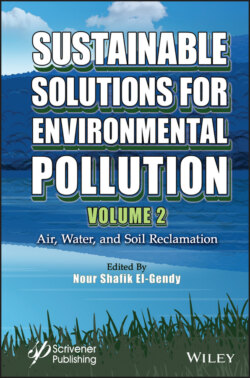Читать книгу Sustainable Solutions for Environmental Pollution, Volume 2 - Группа авторов - Страница 42
1.10.3 Electro-Bioremediation
ОглавлениеRecent developments in electro-microbiology are paving the way for new technologies to improve bioremediation processes without the addition of any chemicals in polluted aquatic environments to be treated. Moreover, electro-bioremediation makes it possible to obtain direct degradation products through electrochemical management of microbial consortium and to control greenhouse gases (GHG) or other noxious gas emissions (Namour and Jobin, 2018).
Our definition of electro-bioremediation excludes the electrokinetic (EK) techniques (Reddy and Cameselle, 2009; Barba et al., 2018; Kaushal et al., 2020). EK is mainly aiming at extracting pollutants after transport over long distances in an electric field. But the application of weak electric fields can have a negative effect on the pollutant-degrading biofilm, electrolyze the pore water, cause pH changes at the cathode, and produce reactive oxygen or chlorine species with antimicrobial effects near the anode (Liu et al., 1997).
Our definition of electro-bioremediation only deals with techniques based on the microbial property to transfer electrons (to breath) to solid surfaces (anode) according to various transfer mechanisms (Lovley, 2012; Malvankar and Lovley, 2014; Santoro et al., 2017). The transfer mechanisms can be chained, so the electron will be transported to the anode surface along a chain of microbial chemical shuttles and conductive nanowires. The anodic surface acts as an inexhaustible TEA for the bacteria near the anode, improving their breathing and thus the oxidation of OM and associated contaminants. Some technologies use the cathode to directly inject electrons for the clean-up of halogenated solvents (Aulenta et al., 2009), nitrate (Virdis et al., 2010), in recalcitrant wastes (Huang et al., 2011).
In electro-bioremediation, instead of optimizing the collection of as many electrons as possible or injecting energy to catalyze the degradation of pollutants, electron flows are regulated via an external resistance control in order to maintain an anodic microbial consortium in optimal conditions for the biodegradation of OM. The maximal potential difference between oxygenated superficial water and anoxic sediments generally reaches approximately 800 mV (Ryckelynck et al., 2005; Donovan et al., 2008; Zhang et al., 2011; Yang et al., 2015; Gonzalez-Gamboa et al., 2017). The greater the TEA potential difference, the higher the energy gain for the bacteria. The external resistance is therefore the relevant parameter to control the performance of the anode biofilm (Ren et al., 2011). A proper anodic potential poised between 0 and 100 mV (NHE) can both enhances OM oxidation (bioremediation enhancement) and cuts noxious gas production (H2S, CH4, and N2O) generated at lower potentials (Jeon et al., 2012). Indeed, electro-bacteria competing with methanogens for OM have half-saturation coefficients lower than methanogens: e.g., Geobacter sulfurreducens: 10μM (Esteve-Nunez et al., 2005) versus Methanosaetaceae: 169μM and Methanosarcinaceae: 3.4mM (Qu et al., 2009). Electrobioremediation stimulates OM removal without chemical or energy inputs, so the operational cost can be significantly lower with other remedial methods. But it is able to lead to higher treatment efficiencies than other bioremediation technologies (Logan et al., 2006; Huang et al., 2011; Wang and Ren, 2013).
Three levels of electro-bioremediation setups exist: 1) bench tests on lab-scale microbial fuel cell (MFC) with a volume <1L; 2) pilot tests on semi-industrial devices (>1 L); and 3) in-field tests on quasi-full-scale. The two first levels deal with Sediment MFCs, and only the last one concerns actually Benthic MFCs.
